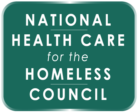Rural Issues
Homelessness exists wherever housing is unaffordable, even in rural areas. People experiencing homelessness in rural communities may be overlooked by service providers in part because they may not self-identify as homeless, when in fact they qualify for programs. But even if they are aware of available services, people without homes in rural communities face major barriers to accessing them. Many of the following resources are older, but key insights remain for serving people in rural areas.
NHCHC Resources
Using the Social Ecological Model to examine how homelessness is defined and managed in rural East Tennessee | 2016
This research document provides an insightful case study in how rural communities engage and perceive homelessness. Though often viewed as an urban issue, homelessness is pervasive in rural areas due to high poverty rates, lack of affordable housing, and geographical isolation. This publication examines that phenomenon through the lens of a 2014 study of East Tennessean communities conducted by the National HCH Council in collaboration with Vanderbilt University and Cherokee Health Systems. Analyzing the experiences of local consumers, organizational staff, and government officials, this study offers suggestions for how rural communities can improve their management of homeless issues and services.
In Focus: Rural Homelessness | 2013
This issue of the In Focus quarterly research review addresses the changing rural landscape, the challenges to identifying the homeless population, the patterns of homelessness, service access and delivery barriers, and promising practices in service delivery in the context of rural settings. A few limitations exist regarding the literature shared, namely the specificity of studies to certain rural communities and some outdated references due to a lack of recent literature on the topic.
Hard to Reach: Rural Homelessness & Health Care | 2002
This document summarizes what is known about the causes of rural homelessness and how the experiences of unstably housed people living in rural areas differ from their urban counterparts. In addition, it describes health problems often experienced by rural homeless clients, highlights strategies that homeless service providers are using to meet the challenges these clients present, and lists their recommendations for policy and practice to improve service access and reduce the incidence of rural homelessness. Sources cited in this report and additional resources about rural homelessness in particular states are included in the bibliography.
Hard to Reach: Rural Homelessness & Health Care | 2001
This issue of Healing Hands examines obstacles to health care encountered by people who first experience homelessness in small communities and remote rural areas of the United States. The following articles briefly explain the causes of rural homelessness and how unstably housed people in rural areas differ from their urban counterparts. In addition, they highlight strategies that homeless service providers are using to meet the challenges these clients present, and recommendations to improve service access and reduce rural homelessness. Information presented here is excerpted from a more comprehensive analysis of these issues, to be published soon by the National Health Care for the Homeless Council with support from the Bureau of Primary Health Care.
Additional Resources
Strengthening Systems for Ending Rural Homelessness: Promising and Considerations | 2018 | United States Interagency Council on Homelessness
Estimating Homelessness in Rural Areas: A Step-by-step Guide and Sourcebook of Information and Ideas | 2002
Publication by David Robinson of the Centre for Regional Economic and Social Research Sheffield Hallam University which explains in a detailed, yet accessible manner, how to estimate homelessness in rural areas.
Report: The 2001 Virginia Rural Homeless Survey | 2001
The report developed by the Center for Housing Research of Virginia Polytechnic Institute and State University shares the process and final report for counting the state’s rural homeless population.
Niches of Homelessness in Rural Nebraska: Bolstering Existing Understandings | 1996
Starting on page 67 the publication describes the method for determining homelessness in rural Nebraska.
Abstract (full text available for purchase): Counting the Rural Homeless Population: Methodological Dilemmas | 1993
One important product of this National Institute of Mental Health-funded study is the successful adaptation of methods for field research on homelessness in rural settings. This article identifies the design dilemmas and the process issues in rural studies that are applicable to social work research in rural environments.
